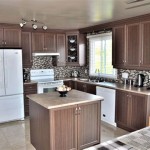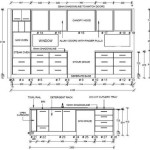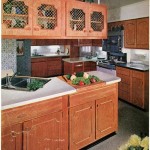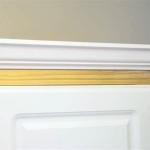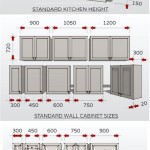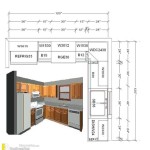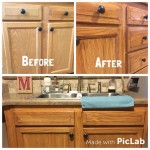Kitchen Cabinets in Phoenix, AZ: A Comprehensive Guide
The kitchen stands as a central hub within a home, frequently serving as a gathering place for families and a focal point for social interaction. This underscores the importance of a functional and aesthetically appealing kitchen design, where cabinets play a critical role in both practical storage and visual appeal. In the Phoenix, Arizona area, homeowners have access to a diverse selection of kitchen cabinet options to suit varying styles, budgets, and functional needs. This article provides a comprehensive overview of kitchen cabinets in the Phoenix area, covering materials, styles, installation, and factors to consider when making a purchase.
Material Selection for Phoenix Kitchen Cabinets
The material used in kitchen cabinets significantly influences their durability, aesthetic appeal, and overall cost. Common materials available in the Phoenix market include wood, plywood, particleboard, MDF (Medium-Density Fiberboard), and metal. Each material exhibits distinct characteristics that homeowners should carefully consider.
Wood: Solid wood cabinets are prized for their natural beauty, strength, and longevity. Popular wood species include maple, oak, cherry, and walnut. Maple offers a smooth, uniform grain that readily accepts paint and stain. Oak, known for its prominent grain pattern, provides a traditional, rustic aesthetic. Cherry, characterized by its rich reddish-brown hue, adds a touch of elegance. Walnut, a premium hardwood, offers a dark, sophisticated look. Solid wood cabinets are generally more expensive than other options but can significantly enhance the value of a home.
Plywood: Constructed from layers of wood veneer glued together, plywood provides a stable and warp-resistant alternative to solid wood, especially in the humid Phoenix climate. Plywood cabinets offer good strength and are less susceptible to expansion and contraction due to temperature and humidity fluctuations. They are often used for cabinet boxes and can be veneered with a variety of wood species for aesthetic appeal.
Particleboard: Particleboard is an engineered wood product made from wood chips and resin, pressed together. It is a cost-effective option but less durable than solid wood or plywood. Particleboard is susceptible to moisture damage, so it is crucial to ensure proper sealing and protection, particularly around sinks and dishwashers. It is generally recommended for cabinets in drier areas of the kitchen and should always be covered with a veneer or laminate.
MDF (Medium-Density Fiberboard): MDF is another engineered wood product, composed of wood fibers and resin. It provides a smooth, uniform surface that is ideal for painting. MDF is denser than particleboard and less prone to warping, making it a suitable option for cabinet doors and drawer fronts. However, like particleboard, it is susceptible to moisture damage and requires proper sealing.
Metal: Metal cabinets, typically stainless steel, offer a modern and industrial aesthetic. They are durable, easy to clean, and resistant to moisture and heat. Stainless steel cabinets are often favored in commercial kitchens but are gaining popularity in residential settings for their sleek appearance and hygienic properties. While durable, metal cabinets can be prone to dents and scratches. The cost associated with metal cabinets is often higher compared to wood or engineered wood products.
Styles of Kitchen Cabinets Available in Phoenix
The style of kitchen cabinets significantly contributes to the overall aesthetic of the kitchen. In Phoenix, homeowners can choose from a variety of cabinet styles to complement their personal preferences and architectural style of their homes. Common styles include traditional, contemporary, transitional, and rustic.
Traditional: Traditional cabinets feature intricate detailing, raised panel doors, and ornate hardware. These cabinets often incorporate decorative moldings and embellishments, creating a classic and elegant look. Traditional style cabinets are often crafted from wood, such as oak, cherry, or maple, and finished in warm tones or rich stains.
Contemporary: Contemporary cabinets are characterized by their clean lines, minimalist design, and flat panel doors. They often feature sleek hardware and are available in a range of materials, including wood, laminate, and metal. Contemporary cabinets emphasize functionality and simplicity, creating a modern and uncluttered aesthetic. Color palettes often include neutral tones such as white, gray, and black, but bold accent colors may be incorporated to add visual interest.
Transitional: Transitional cabinets bridge the gap between traditional and contemporary styles, blending elements of both. They offer a balanced aesthetic with clean lines and minimal detailing, while still incorporating subtle decorative elements. Transitional cabinets often feature Shaker-style doors, a versatile design that complements a variety of kitchen styles. A mix of materials and finishes is common in transitional kitchens, allowing for customization and personalization.
Rustic: Rustic cabinets evoke a warm and inviting atmosphere, characterized by their natural wood finishes, distressed textures, and exposed hardware. These cabinets often feature knotty wood, handcrafted details, and a rugged appearance. Rustic cabinets are well-suited for homes with a farmhouse or country-style aesthetic, creating a cozy and comfortable space.
Installation and Considerations for Kitchen Cabinets in Phoenix
Proper installation is crucial for the longevity and performance of kitchen cabinets. In Phoenix, homeowners have the option of DIY installation or hiring professional installers. While DIY installation can save money, it requires significant carpentry skills and attention to detail. Improper installation can result in uneven cabinets, misalignment, and structural instability. Hiring a professional installer ensures accurate measurements, precise alignment, and proper leveling. Professional installers are also knowledgeable about building codes and regulations, ensuring compliance with local standards.
Measuring the Kitchen Space: Accurate measurements are essential for ordering the correct size and quantity of cabinets. Measure the length and width of the kitchen walls, taking into account any obstructions such as windows, doors, and plumbing fixtures. Consider the height of the ceiling and the desired height of the upper cabinets. Professional cabinet installers will typically offer measurement services to ensure accuracy.
Cabinet Layout and Design: Plan the layout of the cabinets based on the kitchen's workflow and functional needs. Consider the placement of appliances, sinks, and countertops. Optimize storage space by incorporating features such as pull-out shelves, lazy Susans, and spice racks. Creating a detailed kitchen design plan will help to visualize the finished product and avoid costly mistakes.
Climate Considerations in Phoenix: The arid climate of Phoenix can impact the longevity of kitchen cabinets. The extreme heat and dry air can cause wood to warp, crack, or shrink. Selecting moisture-resistant materials, such as plywood or MDF with proper sealing, is important. Consider installing a whole-house humidifier to maintain a consistent humidity level within the home, which can help to prevent wood from drying out. Proper ventilation in the kitchen can also help to reduce moisture buildup.
Permits and Regulations: Depending on the scope of the kitchen renovation, permits may be required from the City of Phoenix or other local authorities. It is important to check with the local building department to determine the specific requirements for kitchen cabinet installation. Ensuring compliance with building codes and regulations will help to avoid potential fines and ensure the safety of the home.
Budget Considerations: Kitchen cabinet costs can vary significantly depending on the materials, style, and installation method. Establish a budget before beginning the project and prioritize the features that are most important. Obtain quotes from multiple cabinet suppliers and installers to compare prices and services. Consider the long-term value of the cabinets and choose materials that will withstand the test of time. Explore financing options if necessary, and factor in potential unexpected costs.
Hardware Selection: Cabinet hardware, such as knobs, pulls, and hinges, can significantly impact the overall look and feel of the kitchen. Choose hardware that complements the style of the cabinets and provides comfortable functionality. Consider the finish of the hardware, such as brushed nickel, polished chrome, or oil-rubbed bronze, and ensure that it coordinates with other fixtures in the kitchen. Invest in high-quality hardware that will withstand daily use.
Countertop Considerations: The countertops and cabinets should be carefully coordinated to create a cohesive and aesthetically pleasing design. Consider the color, material, and thickness of the countertops when selecting cabinets. Popular countertop materials include granite, quartz, marble, and laminate. The weight of the countertop material may impact the structural requirements of the cabinets. Consult with a professional designer or contractor to ensure compatibility between the cabinets and countertops.
Lighting Considerations: Proper lighting can enhance the functionality and aesthetics of the kitchen. Consider installing under-cabinet lighting to illuminate countertops and work areas. Overhead lighting, such as recessed lights or pendant lights, can provide ambient lighting and create a welcoming atmosphere. The placement of lighting fixtures should be carefully considered to avoid shadows and ensure adequate illumination. Choose energy-efficient lighting options to save money on utility bills.
Ventilation: Proper ventilation is essential for removing cooking odors, grease, and moisture from the kitchen. Install a range hood above the stove to exhaust fumes and prevent buildup of grease on cabinets and other surfaces. Ensure that the range hood is properly vented to the outside. Regular cleaning of the range hood filters will help to maintain its efficiency. Proper ventilation can also help to prevent mold and mildew growth in the kitchen.
Appliance Integration: When planning the kitchen layout, consider the placement of appliances and how they will integrate with the cabinets. Ensure that the cabinets are properly sized to accommodate the appliances. Consider built-in appliances, such as refrigerators and dishwashers, for a seamless and integrated look. Provide adequate clearances around appliances for safe and efficient operation. Coordinate the finishes of the appliances with the cabinets for a cohesive design.
Storage Solutions: Maximize storage space in the kitchen by incorporating a variety of storage solutions. Consider pull-out shelves, lazy Susans, spice racks, and drawer dividers to organize utensils, cookware, and pantry items. Utilize vertical space by installing tall cabinets or shelving units. Consider the storage needs of the household and design the kitchen to accommodate those needs. A well-organized kitchen can improve efficiency and reduce clutter.

Kitchen Cabinets Phoenix Az Destination

Kitchen And Bathroom Cabinets In Scottsdale Wide Selection

Quality Custom Cabinets In Phoenix Az Cabinet Maker

Custom Kitchen Cabinets In Phoenix Copper Canyon Millworks

Top 10 Best Kitchen Cabinets In Phoenix Az Updated 2025 Yelp

Kitchen Cabinet Refinishing Refacing Phoenix Arizona

1 Kitchen Cabinets In Phoenix Madera Made The Usa

Custom Cabinet Makers In Phoenix Arizona Cabinetry Company

Rta Kitchen Cabinets Bathroom Vanities In Phoenix Az

Kitchen Cabinets In Phoenix Az Copper Canyon
Related Posts

